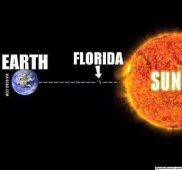eXodus
Solar Addict
- Joined
- Jul 27, 2020
- Messages
- 1,482
I'm looking at the Dometic 12V fridges , those have an automatic defrost cycle. Just didn't find power numbers as quick with Sunstar, Dometic is Swedish and most of their appliances I had in my RVs are rock solid. Got a 20 year old A/C unit from them, 20 year old fridge etc. no issue and I live close the sun in Florida, where those things constantly run.I've had two Sundanzers (one fridge and one freezer), neither lasted 5 years and the fridge was a mold factory since it wasn't self defrosting. (there's something no one talks about)
Are we comparing apples to apples? All of the "super efficient" DC fridges I've been around aren't self defrosting. In humid climates they easily get moldy in the fridge compartment and build up ice in the freezer. Here's a quick read on why you sometimes notice the sides of your regular fridge are warm. I've heard that 50% of standard fridges energy (KWH)'s is from is self defrosting.
The other one that people loved many years ago was a Sunfrost but they are long gone now last I heard. Crazy expensive and honestly I always thought they were poorly built. Fit and finish were terrible and they too also prone to get moldy. Here's thread on it.
FWIW: The first fridge might be DC but when it fails you'll be replacing it with an AC one because you'll be done with it's poor quality and lack of convenience
The Solar, Inverter, battery, load calculations, size of the house, climate zone, latitude etc.What plans are you looking for?
I wired the house as any standard AC system would look like.
The appliances were all standard, albeit high-efficiency, units.
I used to be an electrician in a former life, I wire the AC side of a house in my sleep, But here to learn about Off-grid solar.



